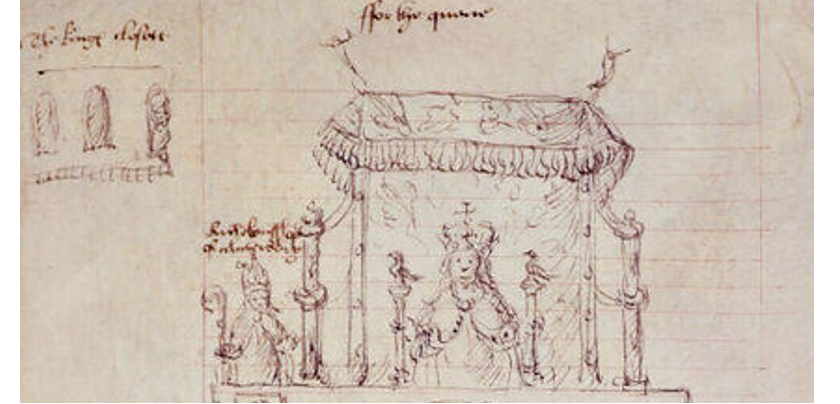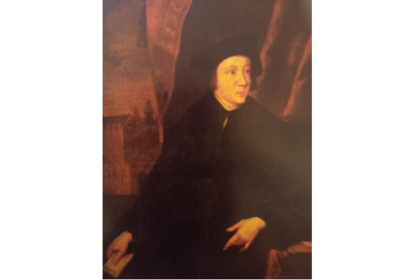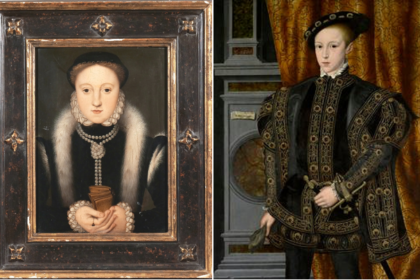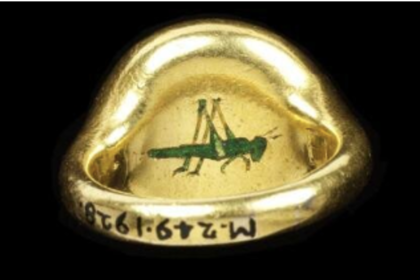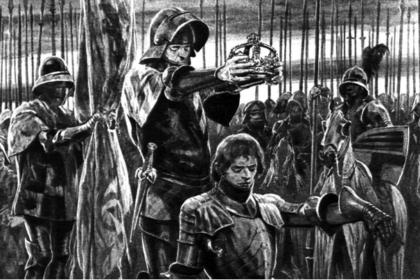Behind the scenes at the moment, arrangements are being made for the coronation of King Charles III and Queen Camilla, set to take place on the 6th May. Though thousands of people are involved in getting everything ready, it all ultimately comes under the control of the Earl Marshall, Edward Fitzalan-Howard, 18th Duke of Norfolk, who heads a committee of Privy Counsellors.
Rewind almost 500 years, and Thomas Cromwell was similarly in charge of arranging the 1st June, 1533 coronation of Anne Boleyn. It was a momentous occasion, and it was absolutely imperative that the event was magnificent enough to make everyone forget about the queen they were all used to celebrating, Katherine of Aragon, now merely Dowager Princess of Wales. No small task.
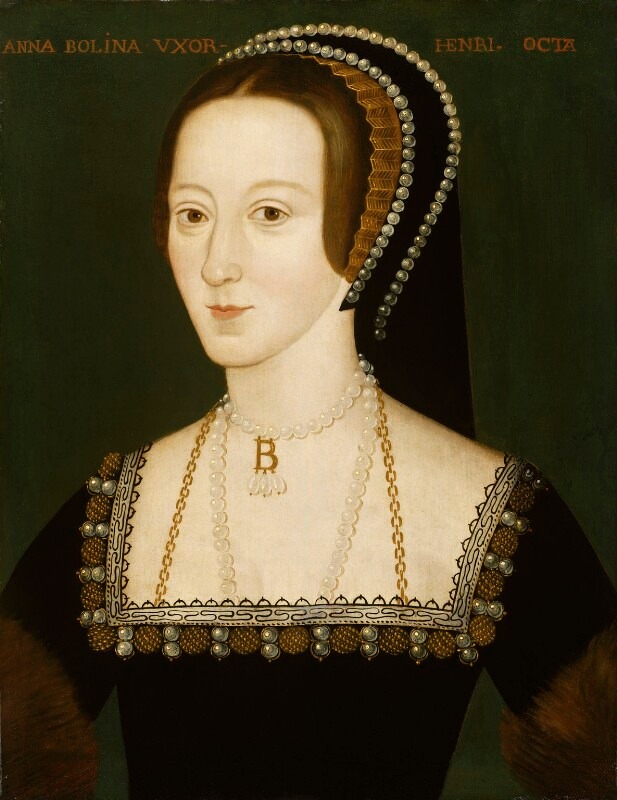
But Cromwell, the consummate royal servant, went about his task diligently. In fact, we have a list of notes he dictated to a clerk on the 28th April, just over a month before the big day, of just some of the arrangements still to be made. I think the first point on the list is the most alarmingly interesting – at this late stage, they still hadn’t even settled on a date!
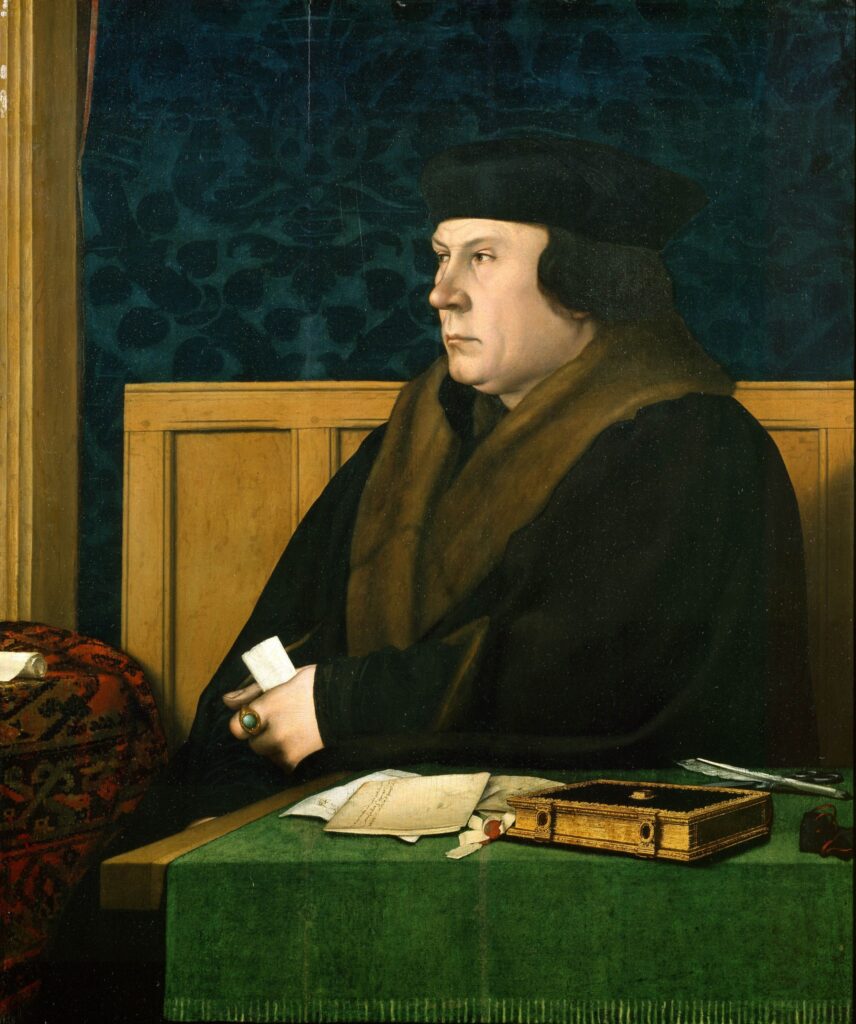
Nevertheless, Cromwell somehow managed to organise every detail perfectly, and most accounts – with perpetual Boleyn-naysayer Chapuys as the exception – agree that it was a splendid occasion.
~
FOR THE QUENES CORONACION
To appoint the day for the coronation, and to prepare all things for the same.
Letters from the King to be sent to the nobles, lords, knights, ladies, and others to attend ; and to those who will be created knights of the Bath, whose names Garter is to have.
Commissions to be made for the Great Steward and Constable.
The day when the Steward shall sit in the White Hall.
All noble men who hold land by service royal to bring in their claims.
The mayor, aldermen, commoners, and craftsmen of London are to meet the Queen before she comes to the Tower.
The King will meet her at the Tower.
A kirtle and mantle of cloth of gold furred with ermines.
A lace of silk and gold with tassels for the mantle.
A circlet of gold garnished with precious stones.
A litter of timber covered with cloth of gold.
Down pillows covered with cloth of gold, for the litter.
A lady appointed by name to bear her train.
The mayor, aldermen, and crafts of London are to do their service accustomed, and the streets between the Tower and Westminster are to be garnished with tapestry, arras, silk, &c., and the banners, standard, and pennons of crafts to be ready to garnish the barges and stand where the wardens be of each occupation.
The Lords, the High Steward, Constable of England, Garter, the Mayor of London, and the two squires of honour to be in crimson velvet and beket hats.
The tipstaves of the marshals in their liveries, to avoid the press of people.
A canopy of gold with valance to be borne by 16 knights.
Two esquires of honour to be appointed to represent the dukes of Normandy and Aquitaine.
A horse of estate, saddled, to be led by the Master of the Queen’s horse.
Six henchmen on palfreys harnessed with cloth of gold.
Two chairs covered with cloth of gold, and ladies of the highest estate to sit in them, clothed in crimson velvet.
Six ladies on palfreys with saddles and harness like those of the henchmen.
Two other chairs richly garnished for the Queen’s ladies.
A great number of ladies and gentlewomen on palfreys dressed according to their estates.
A void to be prepared for the Queen at Westminster.
A kirtle and mantle of purple velvet furred with ermines, with a lace, &c., for the day of the coronation.
A circlet.
A cloth of estate in Westminster Hall.
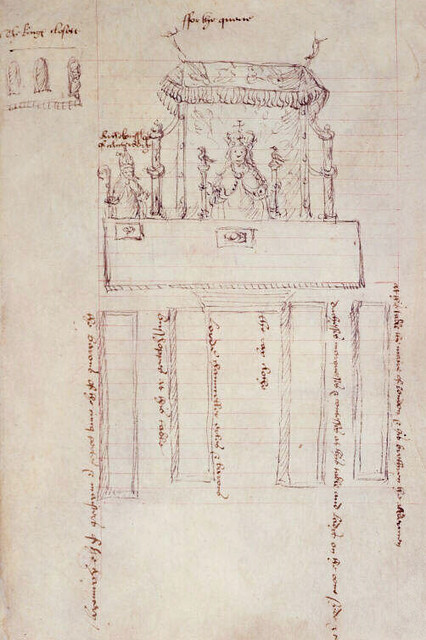
THE PROCESSION
A ray cloth to go from the Hall to Westminster.
A canopy borne by the barons of the Cinque Ports.
Two bishops to go every side of the Queen.
The verge of ivory to be borne.
The sceptre.
A rich crown of gold.
Liveries to be given according to the precedents of the Wardrobe.
The archbishop of Canterbury to do as appertaineth.
The seat royal or pulpit to be dressed with cloth of gold and cushions.
The Queen to be howseled, and after to have a secret refection of such meat as she likes best.
A stage to be made, latticed and covered with rich cloths, for the King and others to see the solemnity.
The mayor, aldermen, and commoners of London, with their crafts, to meet the Queen before she comes to the Tower.
The King to meet her, and welcome her at the Tower.
The service to the Queen at dinner, and the ordering of the hall, to be committed to those who have authority.
A stage in Westminster Hall for minstrels and trumpets.
The kings of arms, heralds, and pursuivants to keep their accustomed stage at the right end of the table, and to have a cloth on the table with proper service.
The Treasurer and Comptroller to go on foot, and the three high estates Constable, Marshal, and Steward, on horseback, their horses trapped.
A stage on the left side of the Hall latticed and garnished for the King.
The surnap, and who shall draw it ; the marshal to be named.
The void after.
The Mayor to bear the cup of gold.
Jousts and tourneys.
To appoint the number of challengers and defenders for the jousts, to go before the Queen from the Tower to Westminster Hall on their steryng horses, garnished with bells and devices.
The Lord Steward, Treasurer, and Comptroller must give warning overnight to those who shall do any service.

